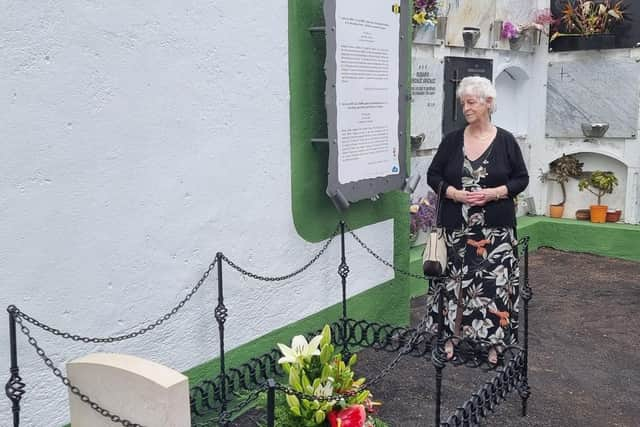Relatives of Second World War hero visit his grave for the first time
John Lee, from Glasgow, served with the Maritime Regiment of the Royal Artillery.
The 22-year-old Gunner was killed while aboard troop transporter the President Doumer during a German U-boat attack as it travelled from Sierra Leone to Liverpool in October 1942.
Advertisement
Hide AdAdvertisement
Hide AdMr Lee was buried after his body washed up on a beach at Playa de las Goteras in La Palma in March 1943.


His relatives, including niece Mary Hastie, got a chance to visit his graveside on the island on Friday after being reunited by officials from the Foreign, Commonwealth and Development Office.
Ms Hastie, 75, from Bearsden, near Glasgow, said: “I found it very emotional, as I have found everything that I have got to know about my uncle’s story.
“I wasn’t born till after the war and it was not something that was spoken about in my home.
“Both my parents died comparatively young and I thought that I would never find out the real story or anything about which island John was buried on.
“So, it was a surprise when I was contacted by a distant and unknown relative telling me the Consul’s office in Spain was looking for me.
“That was when I started getting details of where the grave was and I felt I had to come over to La Palma as I am the last surviving member of the Lee family.
“The local historian knows so much about John and has an eyewitness account of what happened the day the ship was torpedoed.
Advertisement
Hide AdAdvertisement
Hide Ad“He told me that John was a hero, having refused to get into the lifeboats until everyone else was in, and then misjudged the distance when he jumped and was crushed between the lifeboat and the ship.”
She added: “I am sure my grandparents would have been devastated by it, but it was a very different world, then.
“My granny was no stranger to tragedy, my grandpa having lost a foot in the first war and a couple of daughters when they were young. My father was rescued from Dunkirk.”
Mr Lee was one of more than 72,000 seamen who lost their lives during the Battle of the Atlantic – the longest continuous military campaign of the Second World War.
On the day of his death, German U-boats sank or damaged seven ships in the SL 125 convoy, killing 344 people.
Mr Lee has ended up forming part of the history of Villa de Mazo, the town where he is buried, and his grave is officially considered “British soil” after the corner where his body lies was acquired by the British Consulate for 100 pesetas in 1951.
There have been several tributes paid to the soldier over the years, most recently in 2018 to mark the 75th anniversary of the discovery of his body.
This was attended by the then UK Ambassador to Spain, Simon Manley, together with the consul, Charmaine Arbouin, and the vice-consul, Helen Keating.
A giant ceramic poppy from the Tower of London’s moat display in 2014, which was purchased by Mary’s daughter Ruth, will now be mounted on the wall behind John’s grave.
Comments
Want to join the conversation? Please or to comment on this article.